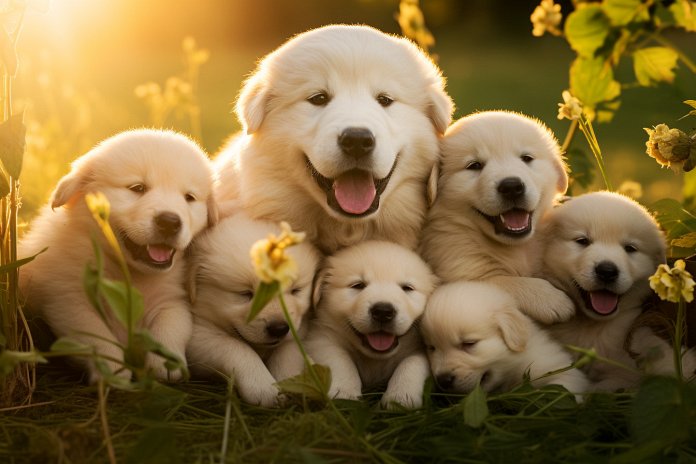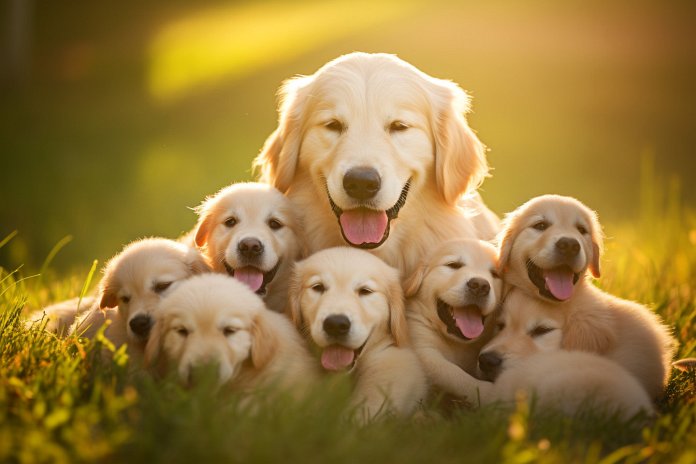
As you prepare to celebrate your mother this May, you may wonder if your beloved canine friend remembers their own mother and family. While most dogs haven’t seen their mothers in years, they don’t give any indication of recognizing them. This raises the question of whether dogs remember and recognize their mothers or other family members.
Signs Your Dog Might Recognize Their Mother
It’s difficult to predict how a dog will react after years of separation from their mother, as scientists haven’t extensively studied this behavior. Each dog may react differently based on their temperament. When they see their mother, most dogs will likely investigate by sniffing her. Excitable dogs may show their excitement by perking up their ears, wagging their tail, or jumping up. On the other hand, more cautious dogs may take time to warm up and approach their mother cautiously. It’s important to be sensitive to your dog’s reactions and not force anything, as this can make them uncomfortable.
Body Language
Here are some signs that indicate your dog is excited about seeing another dog:
– Jumping up
– Wagging tail
– Sniffing
– Ears up
Other Signs
Here are some signs that indicate your dog is uncomfortable with another dog or the situation:
– Acting cautious
– Needing time to warm up
– Aggressive behavior
History of Dogs Recognizing Their Mothers
Dogs are historically family animals, with wolves being their oldest ancestors. Wolves are pack animals that recognize their family members and have a hierarchy. It’s safe to assume that wolves have recognized their family members for thousands of years. Additionally, dogs today can form strong bonds with their parents or siblings, as seen in stories of siblings needing to be adopted together from shelters due to their attachment.
Science Behind Dogs Recognizing Their Mothers
Several studies have been conducted on puppies recognizing their mothers and older dogs being reintroduced to their mothers after several years. While the evidence is still debated, it appears that dogs can recognize their mothers to some extent. In one study, puppies were presented with a cloth that had their mother’s scent and another cloth with another dog’s scent. 82% of the puppies chose the cloth with their mother’s scent. Another study showed that 76% of older dogs still preferred their mother’s scent. The study also revealed that mothers could recognize the scent of their older puppies.
Calming Your Dog Using Their Sense of Smell
Training your dog to recognize their mother is unlikely as it is believed to be a biological response. However, using scent has been successful in calming anxious dogs. For dogs with separation anxiety, breeders may suggest placing a blanket or clothing item with the scent of the person or dog the dog feels safest with in their crate or bed. This can help the anxious dog sleep better and feel calmer in their absence. This demonstrates the power of dogs’ sense of smell, which is a key factor in most studies related to recognizing their mothers.
Conclusion
While dogs may be able to recognize their mothers, there is no need to send a Mother’s Day card to their mother. However, if the opportunity arises, it may be interesting to observe how your dog reacts when reunited with their mother.
“Do dogs recognize their mothers? The evidence suggests they can, to an extent.”

Tips & Things to Know
1️⃣ Dogs can recognize their mothers: Studies have shown that dogs have the ability to recognize their mothers to an extent. They use their sense of smell to identify their mother’s scent and may show excitement or cautious behavior when reuniting.
2️⃣ Every dog reacts differently: Just like humans, dogs have different temperaments and may react differently when seeing their mother. Some dogs may get excited and show signs like wagging their tail and jumping up, while others may be more cautious and need time to warm up. It’s important to be sensitive and not force anything.
3️⃣ Scent can help calm anxious dogs: Dogs have a strong sense of smell, and using scent can help calm anxious dogs. For example, placing a blanket or clothing item that belongs to the person or dog they feel safest with in their crate or bed can help them feel calmer when that person or dog is not around. This is a testament to dogs’ sense of smell and can be a helpful step in helping your anxious dog.
Frequently Asked Questions, Answered ✅
1. How do dogs react when they see their mother after being separated for years?
– Most dogs will likely investigate their mother by sniffing her and may show excitement by wagging their tail or jumping up.
2. What signs might indicate that a dog is uncomfortable with another dog or the situation?
– Signs of discomfort in dogs can include acting cautious, needing time to warm up, or displaying aggressive behavior.
3. Do wolves recognize their family members?
– Yes, wolves, which are the oldest ancestors of dogs, recognize their family members and have a hierarchy within their pack.
4. What does scientific research suggest about dogs recognizing their mothers?
– Studies have shown that puppies can recognize their mothers’ scent, with a majority showing a preference for their mother’s scent. Older dogs separated from their mothers for years also displayed recognition of their mother’s scent.
5. Can scent be used to calm anxious dogs?
– Yes, some dog owners have used scent, such as blankets or clothing items with the scent of a person or dog the dog feels safest with, to help calm anxious dogs. This is based on dogs’ strong sense of smell and can help them feel more secure when their preferred person or dog is not around.